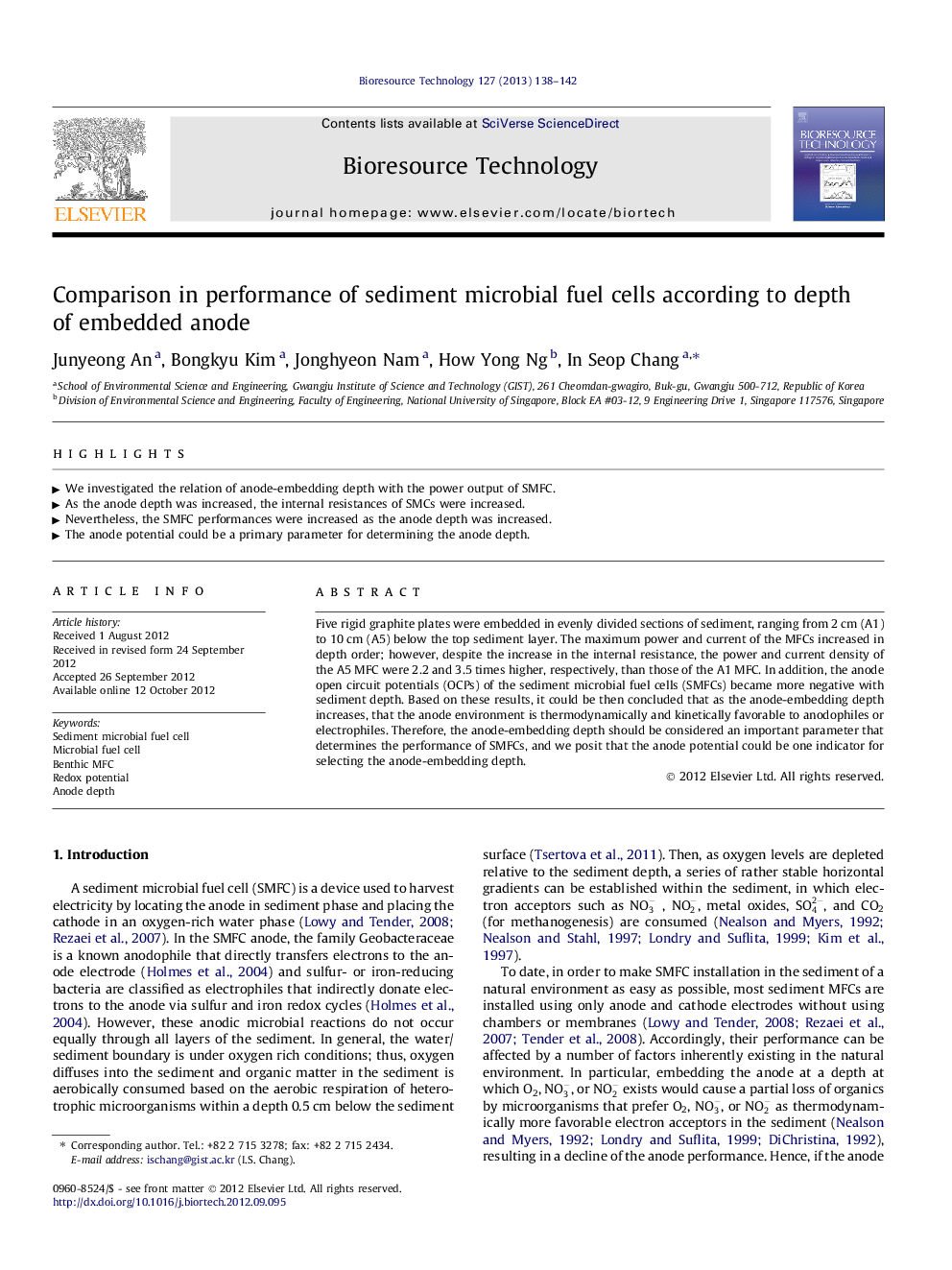| کد مقاله | کد نشریه | سال انتشار | مقاله انگلیسی | نسخه تمام متن |
|---|---|---|---|---|
| 681197 | 1460016 | 2013 | 5 صفحه PDF | دانلود رایگان |

Five rigid graphite plates were embedded in evenly divided sections of sediment, ranging from 2 cm (A1) to 10 cm (A5) below the top sediment layer. The maximum power and current of the MFCs increased in depth order; however, despite the increase in the internal resistance, the power and current density of the A5 MFC were 2.2 and 3.5 times higher, respectively, than those of the A1 MFC. In addition, the anode open circuit potentials (OCPs) of the sediment microbial fuel cells (SMFCs) became more negative with sediment depth. Based on these results, it could be then concluded that as the anode-embedding depth increases, that the anode environment is thermodynamically and kinetically favorable to anodophiles or electrophiles. Therefore, the anode-embedding depth should be considered an important parameter that determines the performance of SMFCs, and we posit that the anode potential could be one indicator for selecting the anode-embedding depth.
► We investigated the relation of anode-embedding depth with the power output of SMFC.
► As the anode depth was increased, the internal resistances of SMCs were increased.
► Nevertheless, the SMFC performances were increased as the anode depth was increased.
► The anode potential could be a primary parameter for determining the anode depth.
Journal: Bioresource Technology - Volume 127, January 2013, Pages 138–142